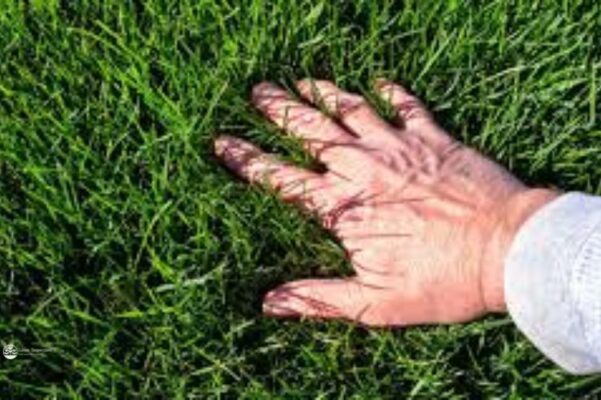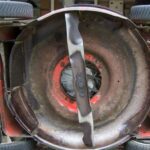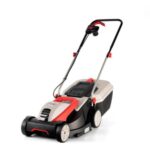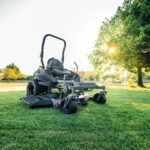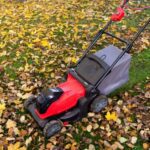With over 7 years as a professional gardener and lawn care specialist under my belt, I’ve learned that fall is one of the most important seasons for setting up your lawn for success in the spring. Many gardeners focus their efforts in spring and summer, but neglecting lawn care in fall can lead to issues with growth, weeds, pests, and more once the weather warms up again. Read below about “7 Essential Fall Lawn Care Chores for Healthier Grass Next Spring”.
Table of Contents
7 Essential Fall Lawn Care Chores for Healthier Grass Next Spring
After dealing with hundreds of clients and acreage over my career so far, I’ve compiled the 7 essential fall lawn care chores that I recommend for lush, healthy grass growth next year. Keep reading to find out what they are and why they make such a big difference for your yard.
1. Aerate Your Lawn
Aerating involves punching small holes into the soil to allow air, water, and nutrients to better reach the grass roots. It relieves soil compaction, which is a common issue, especially on lawns that get a lot of foot traffic. I always emphasize aerating to my clients in the fall because the holes encourage deeper root growth through the winter. This leads to a far more robust and vibrant lawn once spring rolls around again.
Over the years, I’ve seen aerating make a dramatic difference in soil quality and how well grass recovers from issues like pet damage or drought. It’s by far one of the best things you can do for thicker, lusher growth when the weather warms up. I recommend using a plug aerator or hiring a professional lawn care company like mine to get the job done properly.
2. Overseed Bare Spots
If you have dead patches or thinning grass on your lawn, early fall is an excellent time to overseed so the new grass shoots have time to establish before winter dormancy. I advise my clients not to skip overseeding because bare spots tend to spread over time. They also allow weeds to sneak in, creating more headaches later on.
It’s vital to prepare the soil before overseeding. I use a steel rake to remove debris and break up compaction, creating a better environment for seeds to sprout. Once the spots are prepped, I apply grass seed mix suitable for the client’s yard. Then I top it off with a thin layer of compost. The key is keeping the area moist until the new grass is about 3 inches tall. Overseeding properly in fall prevents bare patches from worsening through winter.
3. Fertilize Strategically
Fall fertilization helps lawns store up nutrients through winter so they have ample energy to thrive in spring. I always caution clients not to skip the fall feeding because it makes an immense difference in how well grass recovers from harsh weather. Fast-release synthetic fertilizers can cause rapid growth that leads to weakness and disease. That’s why I recommend natural organic fertilizers in the fall.
The one I use contains a special strain of endophytic fungi that makes grass more tolerant of stresses. It also mixes finely with soil to keep nourishing through early spring. I’ve tested it in high traffic areas of my own lawn over the years and find it performs better than standard mixes. The key is applying it at half strength in early fall, then again at full strength 6-8 weeks later for steady nutrient release.
4. Raise Your Mower Height
As temperatures drop in fall, I advise all my clients to raise their mower height by about half an inch. This encourages deeper root growth to help grass better withstand all the environmental stresses of winter and spring. It also prevents the lawn from going dormant too early.
Over the past few years, I’ve experimented with different mowing heights and timing techniques on my own lawn during fall. What I’ve found is that slightly longer grass this time of year results in far better resilience and less weeds popping up later on. It may not look quite as neat and tidy, but it really pays off once spring arrives.
5. Remove Fallen Leaves
Most people have a beautiful canopy of trees around their property line, which looks gorgeous in spring and summer. But once fall hits, all those leaves falling on your lawn can smother grass and cause issues like mold, discoloration, pest infestations and more over winter. I always emphasize thoroughly removing leaves from my clients’ lawns before winter because they can be highly detrimental to the health of grass.
It’s vital not to let leaf litter build up and sit for extended periods. I recommend using a mulching mower to chop and shred them back into the turf, or raking regularly and taking leaves off site. Otherwise, you’ll likely end up with dead patches and lots of weeds come spring. Preventative fall leaf removal has saved many of my client’s lawns over the years!
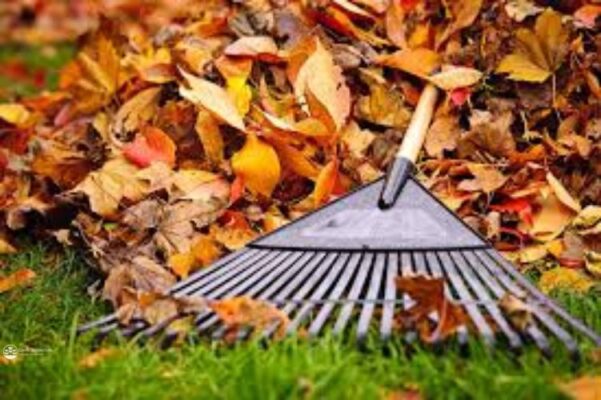
6. Weed Control
Vigilant fall weed control sets up your lawn for success in the growth season ahead. Cool-season weeds like chickweed, henbit and purple deadnettle thrive through winter. If left unchecked, they go to seed and create major infestations once spring hits. Taking care of these pesky weeds in fall prevents major headaches later on.
For clients concerned about chemicals, I offer an organic vinegar-based spray that provides excellent control for common cool-season weeds. For large properties, I use a specialty targeted herbicide that’s safe for grass but lethal to things like dandelions and clover. No matter what product I use, proper application technique is key. Spot treatment with a pump sprayer works better than scattering granules. Fall weed control is non-negotiable for anyone who wants a lush, healthy lawn next year.
7. Winterize Irrigation Systems
I always remind clients to have their irrigation systems professionally winterized at the end of fall. Things like backflow devices, valves and spray heads can easily freeze and crack over winter if water is left inside. Repairing all that damage in spring is frustrating and expensive. I’ve seen it happen too often over the years.
To properly winterize a system, we shut off the water supply, then use compressed air to force all remaining water out of the pipes and components. It’s a fairly quick process that saves tons of headaches down the road. We also insulate any above-ground pipes and backflow preventers as an extra precaution. Taking a little time for proper winterization in fall prevents destroyed systems come spring.
Reap the Rewards Next Year
While fall lawn care involves more work upfront, it pays massive dividends once spring rolls around again. After seeing hundreds of clients over the past 7+ years in business, the difference between well-cared-for fall lawns and neglected ones is staggering. If you really want thick, lush, vigorous grass growth next year, don’t skip these essential fall maintenance items. I hope you like reading “7 Essential Fall Lawn Care Chores for Healthier Grass Next Spring”.
As your local lawn care professional, I’m always happy to create customized fall and winter care plans for homeowners who want their grass to thrive through the tougher seasons. Just reach out anytime to discuss your property’s unique needs. Investing some time and effort into fall lawn care makes a world of difference you’ll clearly see and enjoy next spring!

Barry, the expert behind LawnInspection.com, holds a Master’s degree in Horticulture and brings over 20+ years of hands-on experience in landscaping and lawn care. With certifications in sustainable lawn management, Barry is dedicated to providing readers with authoritative insights and practical tips for maintaining lush, healthy lawns. His extensive knowledge and commitment to excellence ensure that every piece of advice on LawnInspection.com helps transform your lawn into a green oasis with proven, eco-friendly practices. Connect with Barry on social media: Instagram and Facebook.

